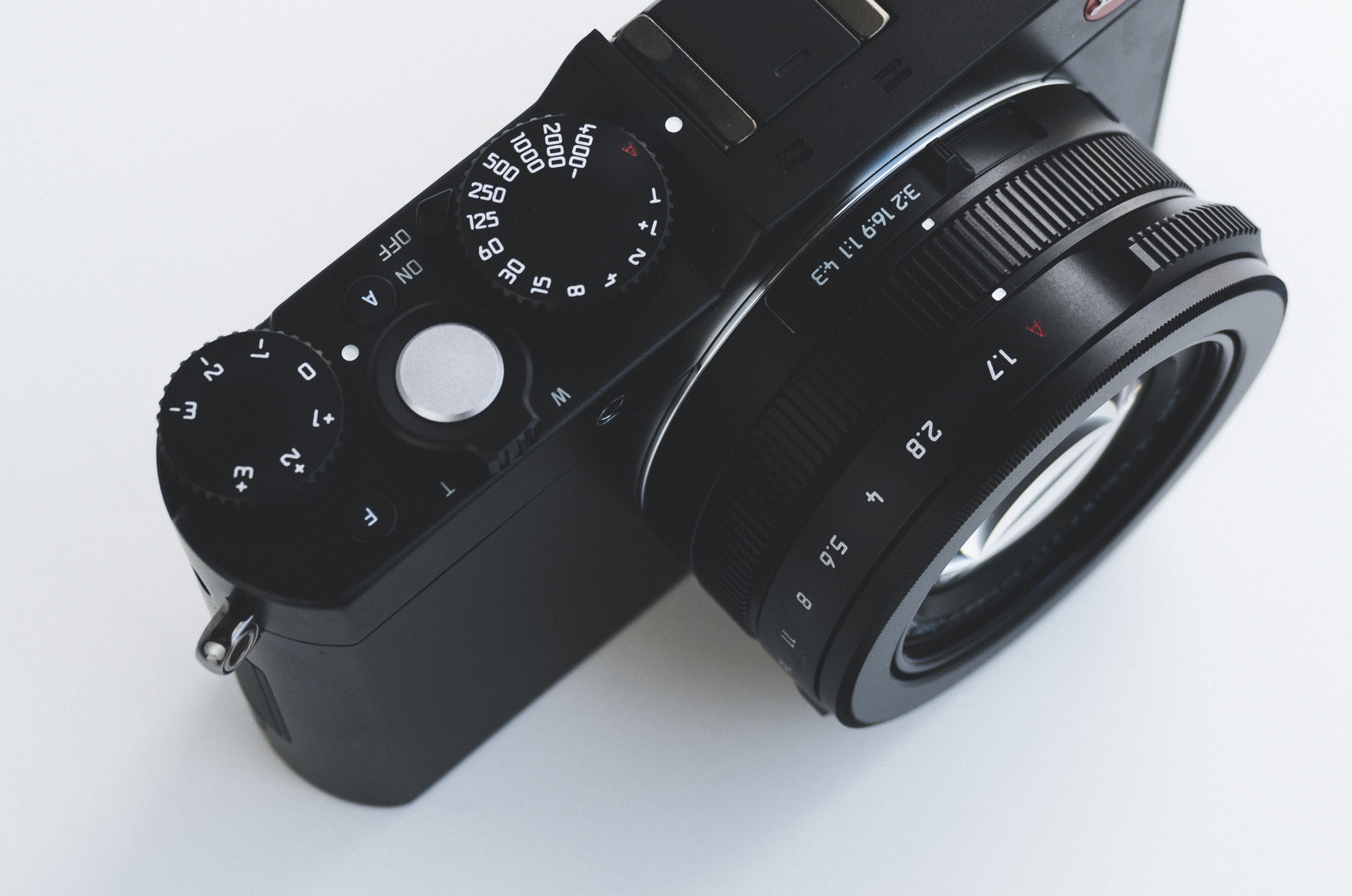The new Leica Q (product image via Leica Camera)
The new Leica Q is here, and I am planning on taking it out for a thorough evaluation this weekend... Sample images will be posted right here soon, as well as my impressions of the camera and how it works. The first image above is from Leica Camera, the rest are my own and may not be used or reproduced without my written permission. The Leica Q was borrowed from Leica Store Miami for this review, but all opinions expressed here are my own and I am not paid or endorsed by anyone to write this review.
The Leica Q has a 28mm fixed lens with 3 aspherical elements, f/1.7 lens, full-frame sensor, and a very nice built-in EVF (electronic viewfinder). Those are the most important specs, but I will elaborate in my review when I finish it.
The Q uses an existing battery from the V-LUX so you won't have trouble finding extras once you get the camera. Leica accessories are notoriously hard to come by, even months after a new camera comes out. At least you'll have a battery, but don't hold your breath for the half case, grip, or other add-ons. The grip is very nice, by the way, and I've been using it most of the time.
I will also include a comparison to other cameras, both from Leica and from other camera brands (looking at you, Sony RX1/R)
Below is the first sample image I'm posting from the Leica Q, and I think it speaks volumes about the capabilities of this camera. Very little was done to this file in Lightroom 6, honestly I spent about 30-45 seconds on it. I have personally shot with the new Monochrom, and the original Monochrom (one of my favorite cameras of all time in terms of image quality), and I think this file looks pretty good considering it's a conversion from color rather than a b&w raw file like the Monochroms produce.
Leica Q raw file converted to b&w in Lightroom 6 - Image ©2015, Benjamin Traves
This is a jpeg of the same image above, unprocessed and straight from the camera.
Above is the jpeg straight out of the camera (SOOC) for those of you interested in that. I always shoot raw (which is DNG format for most Leica cameras) but it is interesting to note that the Q, unlike the M and S, only offers RAW + JPEG mode, no mode with only DNG files, so if you are a raw shooter, you will get some bonus jpegs in there as well. No way to change that yet, but maybe a firmware update in the future will allow it (I'm just speculating about that, no idea if they will or not). Doesn't really bother me, but worth noting. In Lightroom, when you import you can just select the DNG files.
I found myself converting many of these test shots to black & white, and I definitely think the Q sensor is great for B&W.
And the lens can get quite close to your subject (especially compared with Leica M lenses which are generally 2.5-3 ft. minimum focus distance)
The Leica Q is delicious
This was taken by my friend when I handed him the camera to have a look at it. He likes the macro mode. Raw file processed in Lightroom. This was shot handheld at 1/40th of a second, f/2.8 and ISO 400.
** This is a "rolling review" so I'll be adding new thoughts / impressions / opinions and of course more images as soon as I have time.
Lots of image samples coming soon...
Here are some low-light test images...
First one is at 12,500 ISO, with very minimal noise reduction done in Lightroom:
Handheld at night, f/8, ISO 12,500
---------------------------------------------------------
Below are some "mobile uploads" via WiFi which is built into the Leica Q
All images below are jpeg transferred directly from the camera to my iPhone, processed in VSCO Cam and uploaded to my blog post, also from the phone.
Leica Q transfer via Wifi to my iPhone, then used VSCO Cam app and posted it to my blog from my phone... While eating amazing gelato from the new place next door.
Leica Q test image... Sent via Wifi to my iPhone and edited with VSCO Cam app, then posted from phone.










